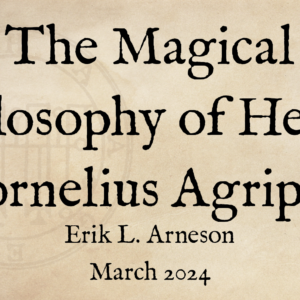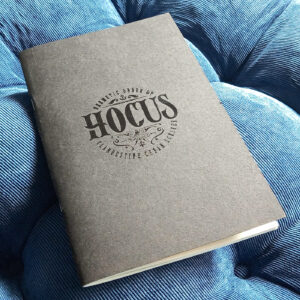The Art of Memory, or ars memoriæ, is a mnemonic technique dating from classical Greece. The technique improves upon our natural memory through discipline, planning, and visualization skills. One of its core methods involves a memory palace, in which memorized architectural details are used to store striking images that aid recall.1 The memory palace technique has been popularized in popular fiction by characters such as Hannibal Lecter and BBC’s latest Sherlock Holmes.
Let’s look at how the Art of Memory relates to the study and use of Tarot.
Striking Images
If you are interested in learning Tarot using the Art of Memory, check out my on-demand class!
One of the techniques of the Art uses visually stimulating images to aid recall. Using imagery to store and recall information was common in Europe before the general availability of paper and the rise of the printing press. An example that has managed to survive until modern times is the iconography of the Greek and Roman churches, in which color, position, and setting have become encoded over the years into a distinct visual language.
Tarot’s origins are also rooted in the availability of affordable paper and printing near the end of the Medieval period. Its striking images serve as mnemonic guides to Tarot readers, leaving it as a still-useful relic of the transitional period between the widespread use of mnemotechnics2 and the increase in literacy.3
“Tarot can be seen as a memory palace, a system of ordering all knowledge,” writes Anders Sandberg.4 While it’s ambitious to say that Tarot can be used to order all knowledge, the vivid, uncommon imagery of the cards definitely makes an amazing collection of mnemotechnic devices. The imagery of each card evokes its meaning. A Tarot reader may have stories, legends, and parables tied to each card.
Memorizing the Tarot
In Learn the Tarot through Meditation, I wrote about building an exact replica of the card’s imagery in your mind. This is the same technique used to encode memory images. When you can build the card in your mind, you can keep it available for recall always.
If you understand the emotions that the card inspires in you, tie them to the image of the card in your mind. Find visual cues that serve to remind you of the meaning of the card and tie them to other things in your memory. These will cement the image of the card into your memory.
Keeping the cards in order means that you’ll need a memory palace of your own. Begin with the Major Arcana, which means your memory palace will need 22 loci, or locations. Building a memory palace requires dedication and practice, but it pays off. You’ll be able to use it and reuse it over and over. The Memory Techniques Wiki has a sparse page about building a memory palace that should serve as a good start. Hackerspace has a pretty good article about using Tarot in particular to build a memory palace.
Imagination and Power
To the Tarotist, this technique is about more than mere memorization. By fixing the images of the Tarot in your memory, you integrate the lessons and imagery of the cards in a new way. In fact, the imagery is vital to interpretation. Mere rote memorization of the cards just gets you numbers and keywords, while using the Art of Memory gets you the entire experience of seeing, recalling, and using the card.
Her Sixth Circle writes about teaching her husband Tarot with a memory palace. She claims that in just a few hours, he was able to recall the interpretations of both the Major and Minor Arcana. In fact, not only could he recall the meanings, but he could give good Tarot readings quickly. “What I find really encouraging is that his intuition is playing a larger role in the whole thing than I think he realizes,” she writes.
In actively using our imagination, we have the power to change the way our mind uses symbols and images.
More Resources
The following books are great resources on the Art of Memory and its history and use.
- The Art of Memory by Frances Yates
- The Medieval Craft of Memory by Mary Carruthers
- Eros and Magic in the Renaissance by Iouan P. Culianu
If you would like to learn more about the Art of Memory and its applications in the modern world, check out Joshua Foer’s TED talk on the subject.
I won’t discuss the technique fully here. The Wikipedia entry on the Art of Memory is a great starting point, however. ↩
That’s a fancy word for “memory techniques.” ↩
Literacy rates in Europe skyrocketed after the adoption of the printing press. See Our World in Data’s page on Literacy for some interesting charts. ↩
See his fascinating Credo Tarot on Flickr. ↩






[…] alphabet and wheel system opens up interesting possibilities. I’ve written before about using tarot with the Art of Memory. Now let’s look at using the Taro with Bruno’s memory system. If you have used Tarot […]
I first heard about the memory palace when I was maybe 19 (from Professor Lettvin at MIT). I put it aside because “I suck at visualizing.” I think it might be time to fix that. Also, Jonathan Foer wrote a book on memory, Moonwalking with Einstein. I’m debating whether to get the Yates book or just jump to the Foer.
There’s supposedly a disorder called aphantasia (https://en.wikipedia.org/wiki/Aphantasia) that has to do with an inability to visualize. But usually, I think good visualization just takes practice. I was lucky enough to get started with the technique in high school, and encouraged to practice even more when I worked through DMK’s “Modern Magick” in 1999/2000. It gets easier with time and makes everything much more amazing. Everything.
Of course this is relevant to my current work, which is writing a manuscript about daily interaction with my tarot deck, and spread-sheeting the results. I started in December 2018, and I’m down to seven cards that haven’t yet come up in a reading; whenever one does come up, though, I write a page about the Minors and 2 pages about the Majors. It’s been grand.
I think that in general, this is fantastic advice. It’s through Palace of Memory techniques that I’ve advanced as far as I have in Toastmasters (I give all of my speeches from Memory), and it’s been the basis for a lot of my work as a school teacher, and as a druid. I wish I were better at memorizing my own poetry, of course — but as pseudo-Cicero himself said, memory-of-topic or memory-of-idea is often more important than the memory-of-word, which takes a lot longer.
I’m thinking about my Hall of Memory Artists construct that I left in an earlier blog post, and I really have to get back to rethinking that — the line Dominicans in a row, Albertus Magnus, Thomas Aquinas, the two others, Camillus in his theater (I remember him with the flower the camellia), and then Giordano Bruno in the fireplace… It’s the two in the middle of the line that I can’t recall clearly enough, although Albertus is pretty tall and sorta mangy, and Aquinas is popping out of a bowl of quinoa, (“Thomas a la quinoa!”)
More to the point — Tarot, Astrology, Geomancy, iChing, Qabalah (however we want to spell it — JMGreer has said that a magical tradition is any three people who agree on the Romanization of Kabbalah), and nearly all of the divinatory and magical arts, are dependent on memory to one degree or another. The Decans, the Terms, the Signs, the Mansions, the Orphic Hymns… it’s possible to stuff our brains with Greek Magical Papyri like mad. Seamus Heaney, in his translation of Beowulf, describes the heroes opening their word-hoards, and not for nothing are the Mansions of the Moon called the treasure-house of images: learning 28 images reliably (or 78 in the Tarot), is a door into all kinds of powers and capacities… not because you can shoot “magic missile” or other matter-and-energy spells, but because you’ve cultivated an intimate level of knowledge in a body of a wisdom tradition that few know, and as a result you can speak deeply from the heart and change people’s minds or sway opinion. Of course, this means that you have to have a chance to speak… but wizards and witches are often good at doing that, too.
[…] been writing and speaking about the Art of Memory for years, and if you have been following the blog or podcast, […]